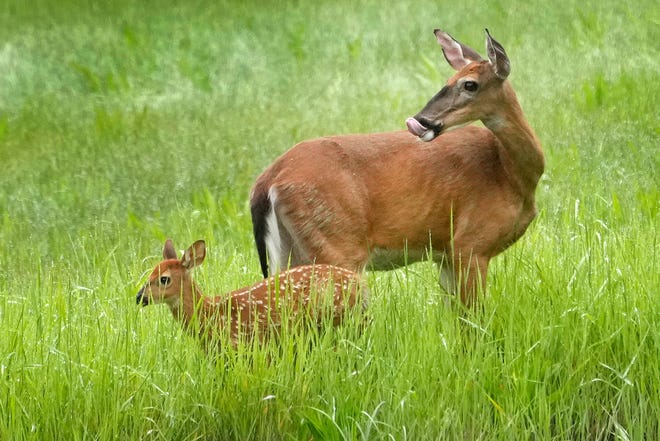Infection
COVID in Ohio deer ‘seems to be moving between people and animals quite easily’
While most people are done with COVID, recent numbers suggest COVID isn’t done with people. Nor, for that matter, with Ohio’s deer.
Deer, it turns out, are susceptible to COVID infections. While the outcome of human infections can range to hospitalization, long-term health effects and death, whitetails barely show symptoms, if they show any.
Most important to people, perhaps, is that the deer living alongside us in suburban settings and those roaming woods and fields are serving as a reservoir for the pathogen. In short, a path of transmission from humans to deer provides a potential path from deer to humans.
Yet to be determined is the nature of that path and the evolution in deer of fast-mutating virus, said Andrew Bowman, an Ohio State University associate professor in the Department of Veterinary Preventive Medicine.
“It’s something that has kept me up at nights,” he said last week.
The concerns emerged from the results of a study conducted by a team of OSU researchers that between November 2021 and March 2022 used nasal swabs to sample 1,522 wild deer in 83 of Ohio’s 88 counties. About one in 10 deer tested positive for COVID, and at least one positive was found in 49 of the 83 counties.
Among the counties where COVID-infected deer showed up were Franklin, Delaware, Union, Fairfield and Hocking. Rural counties with higher deer populations, including Athens, Morgan, Washington, Meigs, Ashland and Richland, showed a significant incidence of infected deer.
What’s more, diseases only infrequently cross from one species to another. However, the team found 30 instances in which deer infections could be traced to humans.
“We don’t have so much deer contact that we should see so many transmissions,” Bowman said.
That finding poses something of a problem, he told Ohio State News.
“It seems to be moving between people and animals quite easily,” said Bowman, co-senior author of the study results published in the journal Nature Communications. “And the evidence is growing that humans can get it from deer – which isn’t radically surprising. It’s probably not a one-way pipeline.”
The mechanism by which COVID, an airborne pathogen that doesn’t last long outside its host, is able to pass from people to deer with apparent ease remains an unknown and will get further study, he said.
At least two other findings raise additional concerns, especially given the transmissibility of the pathogen.
One is that the COVID virus appears to mutate about three times faster in deer than it does in people. What that could mean is deer might produce a previously unknown COVID variant for which humans are not prepared.
Another is sampled deer retained earlier COVID variants that had already run their course and exhausted their existence among the human population. The possibility remains, then, that one or more of the earlier strains could reemerge among humans long after vaccine or infection immunity has worn off.
The persistence of the variants in deer “create opportunities,” Bowman said.
That said, what is certain applies ony to deer sampled until March 2022, he said. The original variants might disappear in deer over time and not remain as a threat to people, though future sampling will be required to find out.
Deer hunters get as close to free-range deer as anyone, particularly at the field dressing and butchering stages of the hunt. Facemasks and rubber gloves offer some safety, which compromised individuals shouldn’t ignore.
A deer infected with COVID looks normal and so doesn’t offer cause to be wary. Its meat properly cooked shouldn’t pose a health risk.

